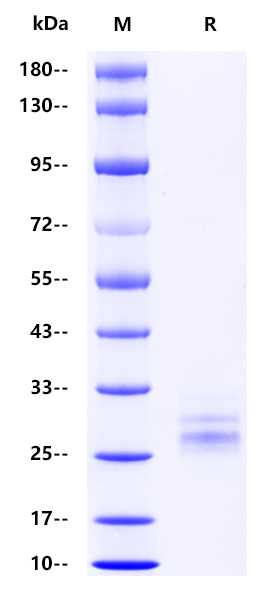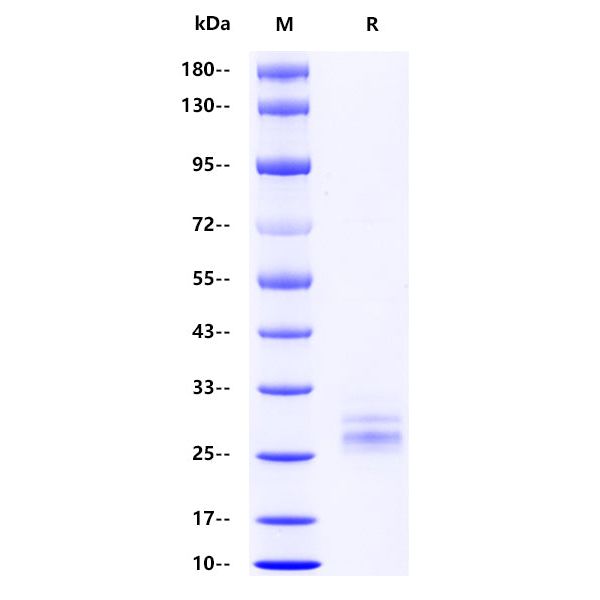2μg(R: reducing conditions)
Product Details
Product Details
Product Specification
| Species | Mouse |
| Synonyms | Osteoblast induction factor (OBIF) |
| Accession | Q8R138 |
| Amino Acid Sequence |
Protein sequence(Q8R138, Thr100-Val280, with C-10*His) TFLIMFIVCAALITRQKHKATAYYPSSFPEKKYVDQRDRAGGPRTFSEVPDRAPDSRHEEGLDTSHQLQADILAATQNLRSPARALPGNGEGAKPVKGGSEEEEEEVLSGQEEAQEAPVCGVTEEKLGVPEESVSAEAEGVPATSEGQGEAEGSFSLAQESQGATGPPESPCACNRVSPSVGGGGSHHHHHHHHHH |
| Expression System | HEK293 |
| Molecular Weight | Theoretical:20.8kDa Actual: 28kDa |
| Purity | >90% by SDS-PAGE |
| Endotoxin | <1EU/μg |
| Tag | His Tag |
| Physical Appearance | Lyophilized Powder |
| Storage Buffer | Lyophilized from a 0.2 μm filtered solution of 0.2M PBS, pH7.4. |
| Reconstitution | Reconstitute no more than 1 mg/mL according to the size in deionized water after rapid centrifugation. |
| Stability & Storage | 12 months from date of receipt, -20 to -70 °C as supplied. 6 months, -20 to -70 °C under sterile conditions after reconstitution. 1 week, 2 to 8 °C under sterile conditions after reconstitution. Please avoid repeated freeze-thaw cycles. |
Background
TMEM119 is known as a microglia-specific and robustly expressed trans-membranous molecule, which is not expressed by other macrophages and immune or neuronal cells, and forms, therefore, the most promising microglia marker to date. TMEM119 has served as a reliable immunohistochemical microglia marker for neurodegenerative diseases since then and was recently stained by an adapted protocol for immunocytochemistry even in postmortem CSF samples of trauma cases.
Picture
Picture
SDS-PAGE



